
Axis & Allies is a series of World War II strategy board games. The first version was initially published in 1981 and a second edition known colloquially as Axis & Allies: Classic was published in 1984. Played on a board depicting a Spring 1942 political map of Earth divided by territories, players take the role of one or more of the five major belligerents of World War II: the Axis powers of Germany and Japan; and the Allied powers of the Soviet Union, the United Kingdom, and the United States. Turns rotate among these belligerents, who control armies of playing pieces with which they attempt to capture enemy territories, with results determined by dice rolls. The object of the game is to win the war by capturing enough critical territories to gain the advantage over the enemy.

Panzer General is a 1994 computer wargame developed and published by Strategic Simulations Inc. (SSI). It simulates conflict during World War II. The designers of Panzer General were heavily influenced by the Japanese wargame series Daisenryaku.

Axis & Allies: Europe is a strategic board wargame produced by Hasbro under the Avalon Hill name brand. Designed by Larry Harris, who designed the original Axis & Allies board game, Axis & Allies: Europe focuses game play on the European Theatre of World War II.
Axis & Allies: Pacific is a strategy board game produced by Hasbro under the Avalon Hill name brand. Released on July 31, 2001 and designed by Larry Harris, the designer of the original Axis & Allies game, Axis & Allies: Pacific allows its players to recreate the Pacific Theater of World War II.

The Russian Campaign is a strategic board wargame published by Jedko Games in 1974 that simulates combat on the Eastern Front during World War II. Avalon Hill later bought the game and produced several editions.

King of Kings (キングオブキングス) is a turn-based strategy video game with wargaming elements for the Family Computer, released only in Japan. Kazuma Kaneko helped to design the characters for this video game, which became the inspiration for the characters in the video game Megami Tensei.

Pacific General is a computer wargame depicting famous battles of the World War II Pacific campaigns. It was published by Strategic Simulations in 1997 using the same game engine of the earlier and successful Panzer General for Windows 95. It was re-released on GOG.com in May 2015.
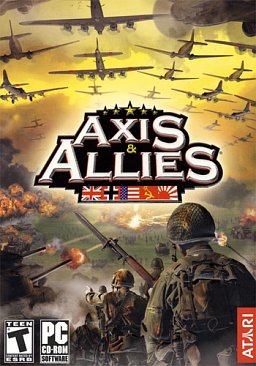
Axis & Allies is a real-time strategy World War II video game developed by TimeGate Studios and published by Atari for Microsoft Windows. The game was released on November 2, 2004. It is based on the board game series Axis & Allies from Milton Bradley and also on TimeGate's Kohan series. Set in the years after Japan and the United States entered into the war, the game allows the player to act as a World War II commander to build military forces to fight against other generals, using military units and technologies from the war. The player is able to rewrite and recreate the history of World War II.
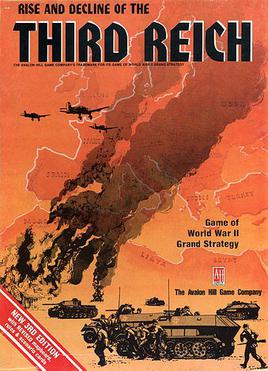
Rise and Decline of the Third Reich or more commonly Third Reich is a grand strategy wargame covering the European theater of World War II, designed by John Prados and released in 1974 by Avalon Hill. Players take on the roles of major powers—Germany, Italy, United Kingdom, France, the Soviet Union, and the United States—from 1939 to 1946.

Battle of the Bulge is a board wargame published by Avalon Hill (AH) in 1965 that simulates the World War II battle of the same name. General Anthony McAuliffe (ret.), who had been commanding officer at Bastogne during the Battle of the Bulge, was a consultant during the game's development. The game proved popular and sold more than 120,000 copies, but was dogged by criticisms of historical inaccuracies, and was finally replaced by a completely new edition in 1981. A third edition in 1991 was released as part of the Smithsonian American History Series.
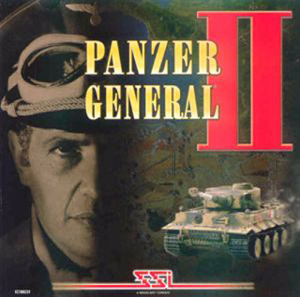
Panzer General II is a computer wargame by Strategic Simulations, Inc. Released October 15, 1997, Panzer General II is the sixth SSI game in the Panzer General series and the first in the "Living Battlefield" series. It takes place during World War II, covering events from the Spanish Civil War in 1938 to hypothetical battles in 1946. In the April 2000 issue of the magazine PC Gamer, it was voted the 44th best computer game of all time, and the highest rating in the Panzer General series. The game was re-released in 2010 on GOG.com.
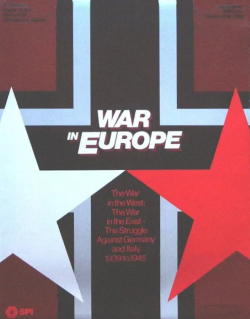
War in Europe is a grand strategic "monster" board wargame published by Simulations Publications Inc. (SPI) in 1976 that attempts to simulate the entirety of the European theatre of World War II from 1939 to 1945. One of the largest wargames ever produced, War in Europe features 4000 counters, four rulebooks, and nine maps that when placed together cover an area of 38.5 ft2. The game is nominally a three-player game, but each side can be represented by teams of players. SPI estimated the full game would take at least 180 hours.
Strategic Command: European Theater is the first game in the Strategic Command strategy game series, and is a turn based strategy game set in World War II. It allows you to play the Allies or the Axis. The smaller European nations can go either way depending on how the Axis or Allies act towards them. Although on historical mode some nations join the allies or axis by default while others depend on the course of the war and aggression of the major powers.

Axis & Allies: Pacific 1940 is a board game created by Larry Harris and published by Avalon Hill as part of the Axis & Allies family of games. It is considered to be a revision of Harris' earlier game, Axis & Allies: Pacific. Among the major changes from Pacific was the incorporation of newer rules from newer Axis & Allies revisions, as well as features exclusive to this game.

Axis & Allies: Europe 1940 is a 2010 board wargame simulating the European Theatre of World War II at the strategic level.

Diplomacy is a strategic board game created by Allan B. Calhamer in 1954 and released commercially in the United States in 1959. Its main distinctions from most board wargames are its negotiation phases and the absence of dice and other game elements that produce random effects. Set in Europe in the years leading to the First World War, Diplomacy is played by two to seven players, each controlling the armed forces of a major European power. Each player aims to move their few starting units and defeat those of others to win possession of a majority of strategic cities and provinces marked as "supply centers" on the map; these supply centers allow players who control them to produce more units. Following each round of player negotiations, each player can issue attack and support orders, which are then executed during the movement phase. A player takes control of a province when the number of provinces that are given orders to support the attacking province exceeds the number of provinces given orders to support the defending province.
Panzer Campaigns is a series of operational level wargames originally developed by John Tiller Software, and currently by Wargame Design Studio. The games were originally published until 2010 by HPS Simulations, then self published by John Tiller Software until being bought out by Wargame Design Studio in 2021, after Tiller's death. There are currently 31 titles in the series, spanning the various fronts of World War II.

Axis & Allies: World War I 1914 is a war and strategy board wargame in the Axis and Allies series created by Larry Harris and published by Avalon Hill. Unlike the other games in the Axis and Allies series, it focuses on World War I, specifically the European, African, and Near East theaters.
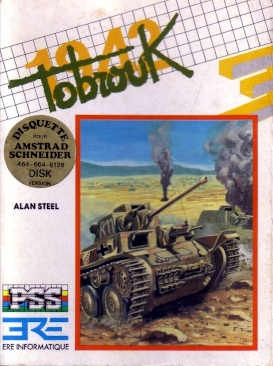
Tobruk: The Clash of Armour is a turn-based strategy video game developed and published by Personal Software Services. It was exclusively released in the United Kingdom for the Commodore 64, ZX Spectrum and Amstrad CPC in 1987. The game is set during the 1941 Siege of Tobruk of the Western Desert Campaign in World War II and revolves around the Allied forces attempts to overthrow German field marshal Erwin Rommel from the city.
World War II: European Theater of Operations is the title of two related but dissimilar board wargames that simulate the European Theater of World War II. The first was published by Simulations Publications Inc. (SPI) in 1973, and the second by TSR in 1985 following its takeover of SPI.
















